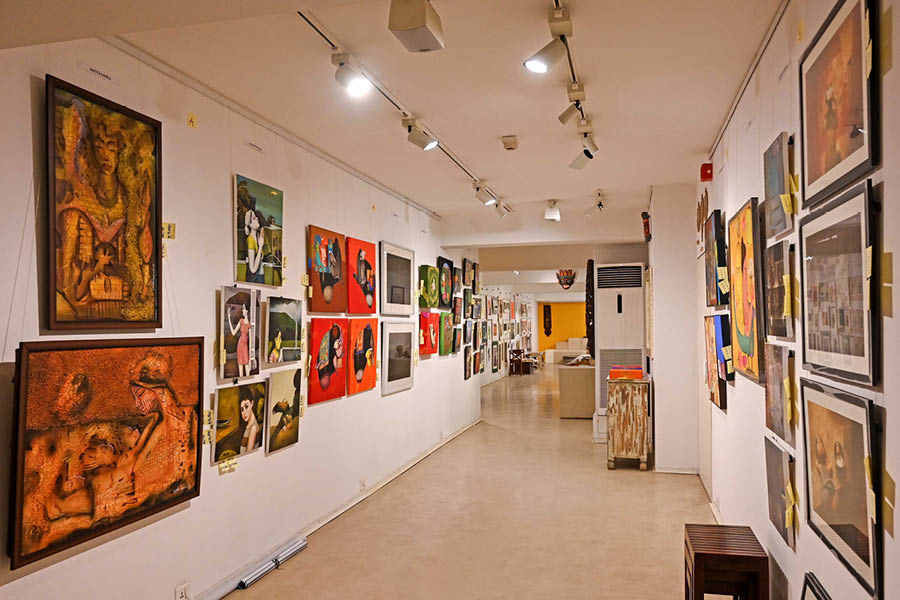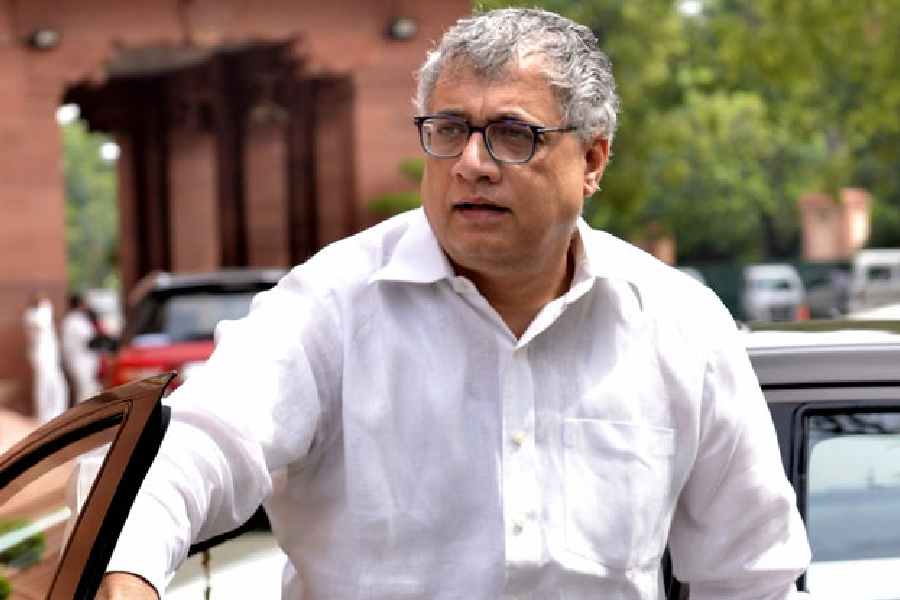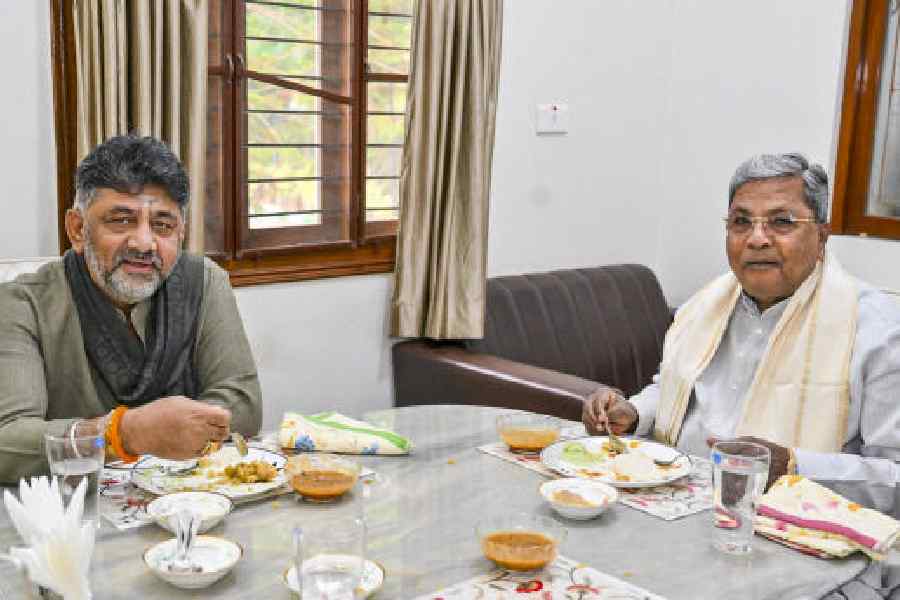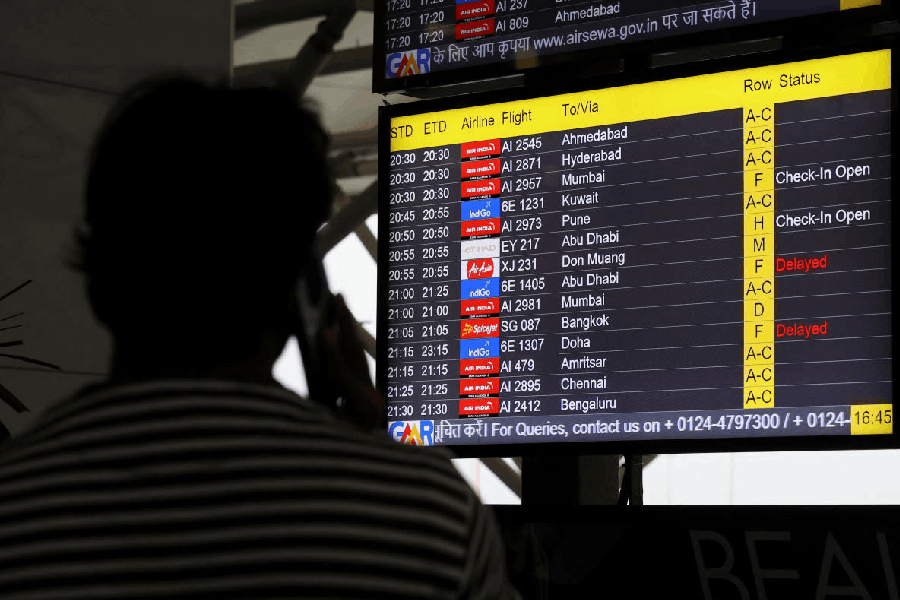The merest slivers of green have sprouted on the three biggish crochet letters of the English alphabet that together form the word VOW.
One has to look really hard at the letters to realise that the green speckles on the letters are the only manifestations of living nature within the vast historical edifice of the Currency Building, where 240 works by 53 artists are on display on its ground and two floors.
They are part of an imaginatively laid out exhibition titled Material as Metaphors: A Dialogue of Art Forms, organised by the National Gallery of Modern Art (NGMA), executed by Basu Foundation and curated by Sayantan Maitra Boka.
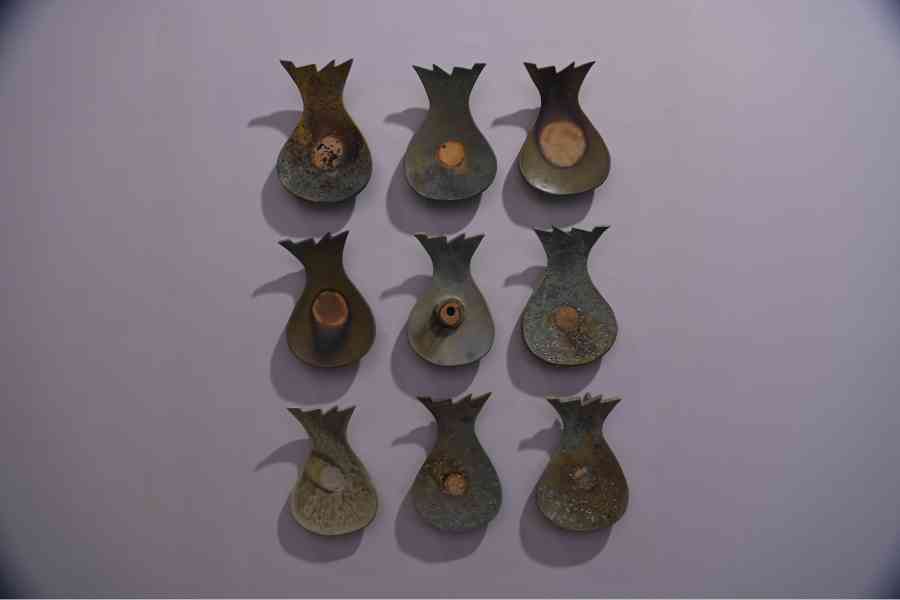
Material as Metaphor- A Dialogue of Art Forms at National Gallery of Modern Art , Kolkata (Old Currency Building ) on Wednesday afternoon. (21.05.2025) The Telegraph picture by - Bishwarup Dutta
This small work by Mallika Das Sutar that could easily be overlooked, highlights the ecological crisis that besets our world and reminds viewers of their collective responsibility towards the goddess of the earth, call her what you will.
It is a common enough theme nowadays, but Das Sutar’s minimalist approach is quite fresh. This environmental awareness is one of the many threads that create the vast tapestry of prints, textiles, photography, painting, sculpture, installations, video and sound art from the Indian subcontinent that the 47-year-old Maitra has created within the confines of the Currency Building.
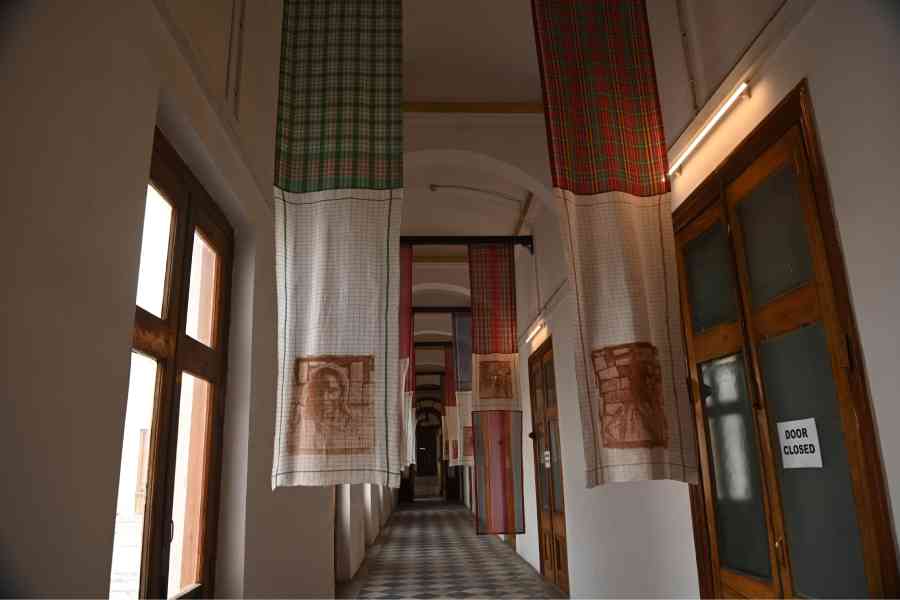
Material as Metaphor- A Dialogue of Art Forms at National Gallery of Modern Art , Kolkata (Old Currency Building ) on Wednesday afternoon. (21.05.2025) The Telegraph picture by - Bishwarup Dutta.
An architect by training, Maitra has been passionately engaged in public art for the past two decades. He has worked on this project for the past five months.
Jayashree Chakravarty’s outstanding painting, Midday light, slathered with white is rooted in the disquieting ground realities of her environment. Uprooted, the copper wires are like a multitude arms raised in protest.
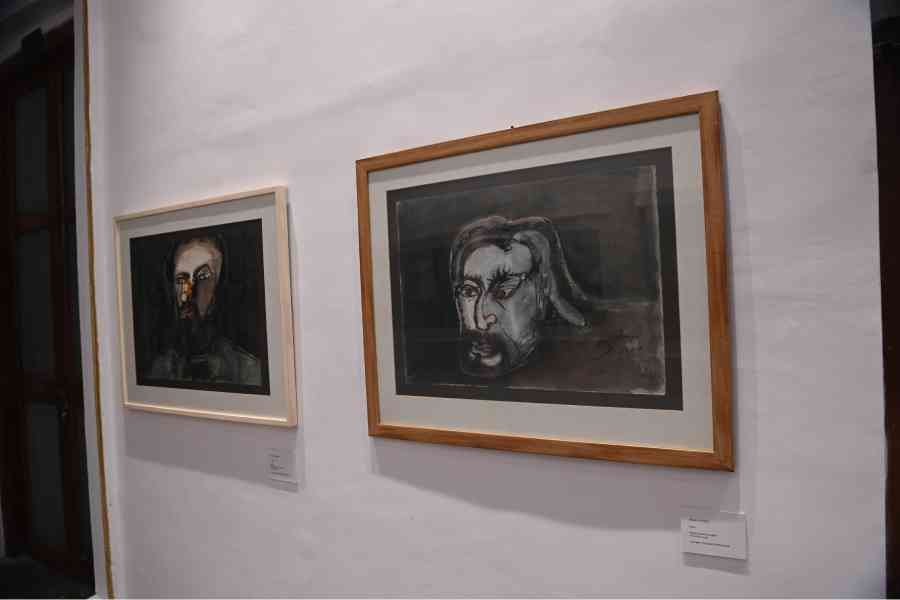
Material as Metaphor- A Dialogue of Art Forms at National Gallery of Modern Art , Kolkata (Old Currency Building ) on Wednesday afternoon. (21.05.2025) The Telegraph picture by - Bishwarup Dutta.
Tradition and modernity exist here in harmony. Thirty-eight oleographs based on Hindu myths by Raja Ravi Varma in a ground-floor room are juxtaposed with an eight-foot fibreglass sculpture of Hanuman spangled with heavenly bodies representing the universe. Gigi Scaria’s two works on human habitation are phenomenal.
In Sukanta Majumdar’s No Country For Aurality (a quadraphonic sound composition with video), the strident voices resonate in this vast room named the Vault, where once bullion used to be stored. Women labourers once chanted while beating a mix of lime mortar and brick aggregate into the right consistency with a wooden tool to create a lime concrete terrace.
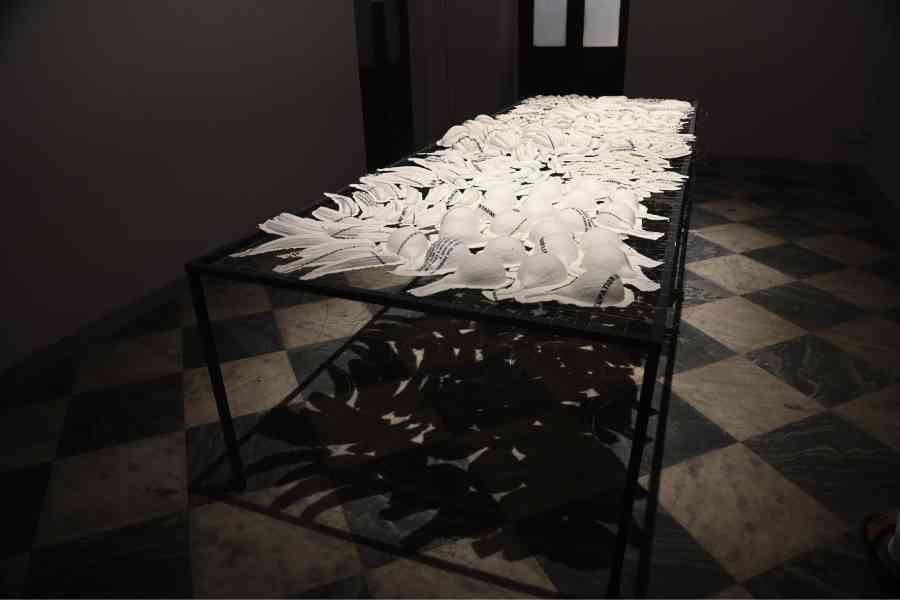
Material as Metaphor- A Dialogue of Art Forms at National Gallery of Modern Art , Kolkata (Old Currency Building ) on Wednesday afternoon. (21.05.2025) The Telegraph picture by - Bishwarup Dutta
The Currency Building has lime concrete terraces, and in Sanchayan Ghosh’s installation (it could have been fine-tuned), this obsolete process comes alive as their songs waft through the top floor.
Mrugen Rathod was not allowed to videograph illicit sand mining. So he recorded the nerve-wracking noise produced by the plunder. When the sound recording was yoked to his video of a community of tiny crabs nestled inside the sand, one senses the vulnerability of the natural world.
Prabhakar Pachpute’s single-channel projection video Earthwork of Hadast stresses the dehumanising effect of mining.
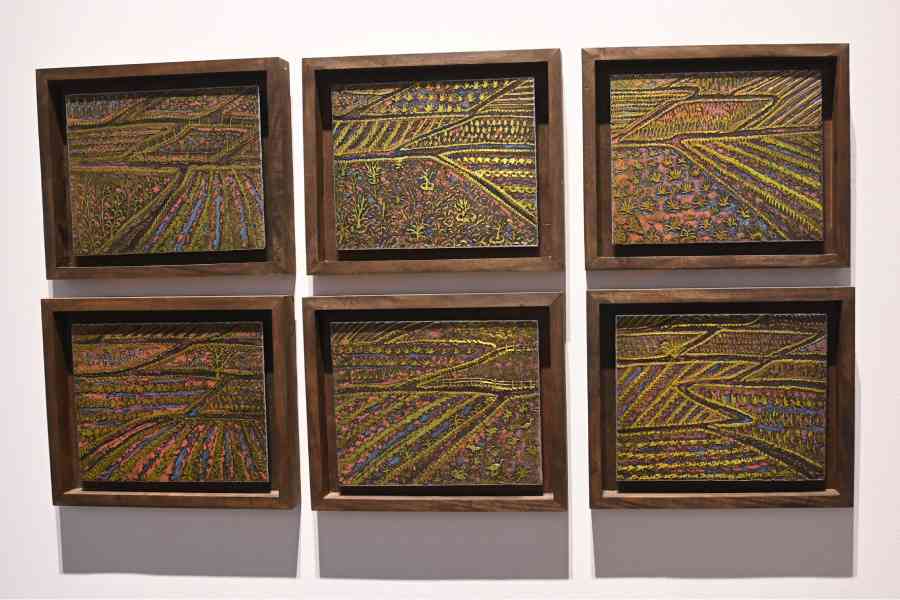
Material as Metaphor- A Dialogue of Art Forms at National Gallery of Modern Art , Kolkata (Old Currency Building ) on Wednesday afternoon. (21.05.2025) The Telegraph picture by - Bishwarup Dutta
The sound of silence can be terrifying and that comes across in a haunting interactive installation titled Sapna by Janhavi Khemka, who is a hearing and speech impaired artist. She can only see and the world she observes with her eyes is nightmarish. Yet Khemka is capable of creating captivating work. In the baby pink Letter to My Mother installed on the floor like a rangoli, innumerable mouths form words that cannot be heard. In both works, viewers can feel vibrations just the way Khemka does.
Himmat Shah takes apart a huge head in his simulating metal sculpture. His 11 posters that line the first floor corridor exude the raw energy of this sculpture. The intensity and emotional energy of Manu Parekh’s 16 psychological portraits have an overwhelming effect on viewers.
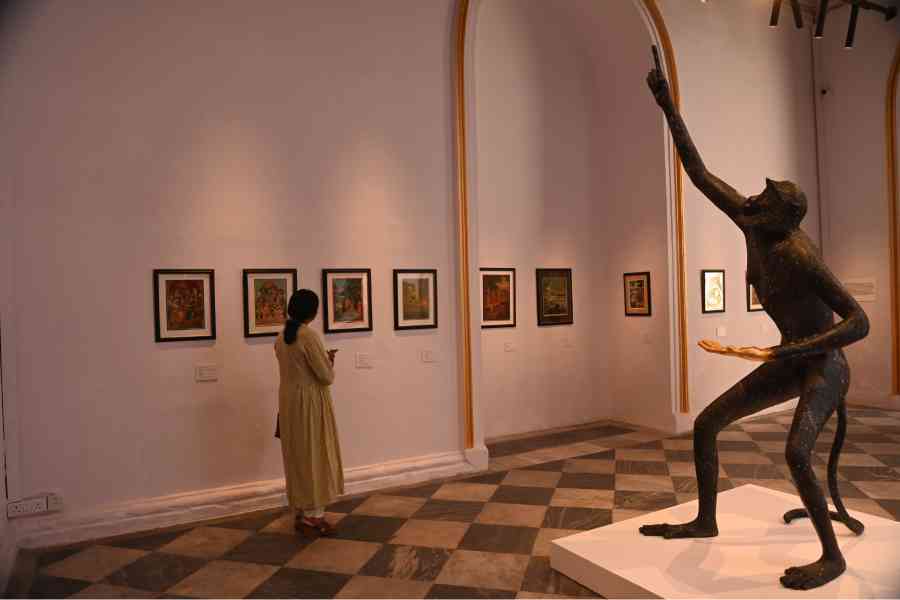
Material as Metaphor- A Dialogue of Art Forms at National Gallery of Modern Art , Kolkata (Old Currency Building ) on Wednesday afternoon. (21.05.2025) The Telegraph picture by - Bishwarup Dutta.
The exhibition brings together 15 Krishna Reddy prints.
Both Ankush Safaya and Ujjal Dey’s stand out for their sensitivity. While Safaye’s work with piercings on paper and white sewing thread cascading from it is fragile, Dey’s work reminds us of the simple grace of rusticity.
The biggest surprise of this exhibition is the showcasing of Sohrai and Khovar art, wall art of Bihar that is not quite popular as Madhubani and its ilk, in two gargantuan rooms. Created by tribal women on paper instead of walls of homes, the rooms come alive with these primitive motifs of animals, humans and sacred symbols.

